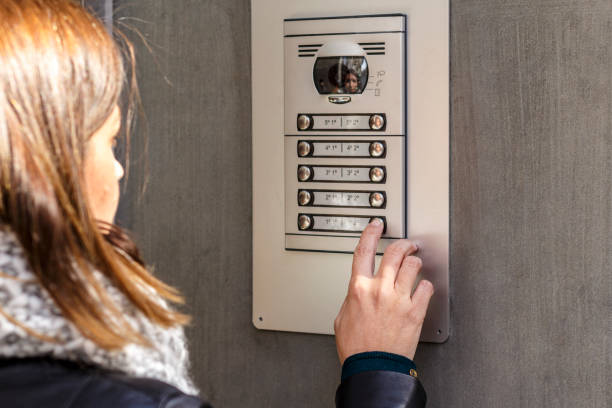The Morcher capsular tension rings were approved in the fall of 2003. It took a while before ophthalmologists could finally use them. Although the call can be used to provide more excellent safety for certain patients during cataract surgery, many questions still need to be answered. These include determining which patient needs it, when to place it, and how large to use it. This article will share my seven years of experience with capsular tension rings. It will help you to use them confidently.
Preoperative Evaluation
You now have the option to use a capsular tension band to assist your surgery with patients who have weak or damaged zonular support. The first problem you face is deciding who will require one. It would be best to consider the apparent signs and those you might not have considered.
Any patient with loose zonules, or who you suspect will develop them later, is a candidate for a capsular ring. It is important to note any history of radial keratotomy, vitrectomy, or other blunt or penetrating traumas that may have affected the zonules.
Because the anterior chamber can be opened, especially when it is unstable, the lens-zonular compound can trampoline, weakening zonules. RK is an example of this. In the case of RK, the chamber might have shrunk slightly after the micro-perforation had healed. The zonules may have been stretched when the room returned to normal. This is also true for trabeculectomy and vitrectomy. You have tested and weakened zonules if you add to the instability postoperatively due to vitrectomy’s deficient vitreous base support and trabeculectomy’s varying shallowing or deepening during postoperative healing.
Take note of the patient’s past and look for signs of zonular stability. The preoperative evaluation of zonular weakness is divided into diffuse and segmental. The first type is often due to trauma. It involves patients with strong zonules except for one or two sectors. The second condition is marked by general degeneration of zonules. This can be caused by conditions such as pseudoexfoliation, Weill-Marchesani, or Marfan’s syndromes.
If you are looking for diffuse weakness, particularly pseudoexfoliation in the eye, inspect the anterior surface, pupillary ruff, anterior surface, and iris. Also, check the angle of the anterior chamber. Endothelial photography or Confocal Microscopy can help detect pseudoexfoliative material in the endothelium. Gonioscopy might reveal other signs that may not have been noticed. These additional tests have allowed me to see pseudoexfoliation in patients that otherwise might not have been detected. It would be best if you were also looking for abnormal depths in the chamber or lens movements. If you measure chamber depth, you may notice asymmetric measurements.
You may be able to see loose zonules in some cases. However, in some cases, such as trauma, it can be challenging to determine the extent of the damage. My rule of thumb in these cases is, “Whatever you think the slit lamp can see, double it.” Based on the exam, you may deal with three to four hours of loss or dehiscence. But when you reach the OR, half the zonules have disappeared.
Signs intraoperative
Even with all your best efforts, patients may have undetected weak zones. These patients can still benefit from a tension band after the procedure.
Be aware of the instability in the anterior chamber during the procedure. You might notice a sudden, deepening section when inserting the infusion tips. The lens-iris diaphragm may move back into the posterior room. You will see excessive pupil dilation as a result of this chamber deepening. You may also notice the capsule moving away when you press the button to initiate your capsulorhexis.
It would be best if you also looked for signs of vitreous edema around the segment of zonules. This may not be obvious at the slit lamp. If it is not evident that there is vitreous in the anterior compartment, you should inject some Kenalog (triamcinolone Acetonide, Bristol Myers Squibb) directly into the suspected area. This technique was first described in 2000 by Gholam Peyman, Tulane University surgeon, and then popularized by Scott Burke, MD, Ph.D. of the Cincinnati Eye Institute. It will appear as white powders if vitreous is present.
Contraindications
It takes a lot of work to make. A capsular tension ring can be helpful for many patients. The U.S. Food and Drug Administration studied the Morcher rings and found that most patients had at least 90 degrees of zonular dysfunction.
A patient with anterior capsulorhexis/poster capsular tear would not be able to use a ring unless the ring has been converted into a continuous circular Rhexis. The ring’s centrifugal tension could cause the capsule to open along the “faultline.”
Inserting The Ring
There are no set rules regarding when the capsular tension rings should be inserted during the case. I recommend inserting the call as soon as possible, but there is still time. The more cataracts you have, the easier it will be to insert the coils. However, a timely insertion can stabilize the lens and reduce the risk of surgery. These are some things to remember.
Constructing the capsulorhexis
Patients with zonular damage may be more likely to develop postop capsular contraction. It’s best to have a decent-sized capsulorhexis at the end of each case. It may tear radially if it is too large. A 5.5mm capsulorhexis would be ideal as it will cover the implant’s edges. Evidence suggests that protecting the edges of the implant will result in less capsular contraction and PCO.
Phaco “tips”
I can raise the nucleus above my capsule and put less stress on the lens, I prefer to use either a supra capsular or chop technique.
Use a stop-and–chop or divide–and–conquer technique. Ensure the phaco power setting is high enough to cut through the nucleus. This is similar in concept to the “knife through bread” method, which Roger Steinert, a Boston surgeon, calls it.
Viscoelevation is another excellent technique. This involves a traditional hydro dissection, followed by a second viscodissection with a retentive viscoelastic. The viscoelastic pushes up the nucleus, which allows you to phaco it with a gel medium instead of in its capsule. This is especially useful for patients with shallow chambers, where you must protect the tablet without getting too close to the cornea.
You should also want to lower the fluid infusion for patients with weak zonules. This is to avoid pressure surges that could put undue stress upon the zonules.
Sizing
When choosing between the three sizes of CTRs currently approved, consider the white-to–white measurement. This can be done with a caliper or, more precisely, with the optional software on the IOL Master.
Another factor you can use is your subjective assessment of the degree and nature of zonular laxity. This will be easier as you get more experience. A small ring might be best for someone with a low white-to-white meter and slight zonular laxity. However, a person with a sizeable white-to-white measurement and significant laxity might prefer a larger ring.









